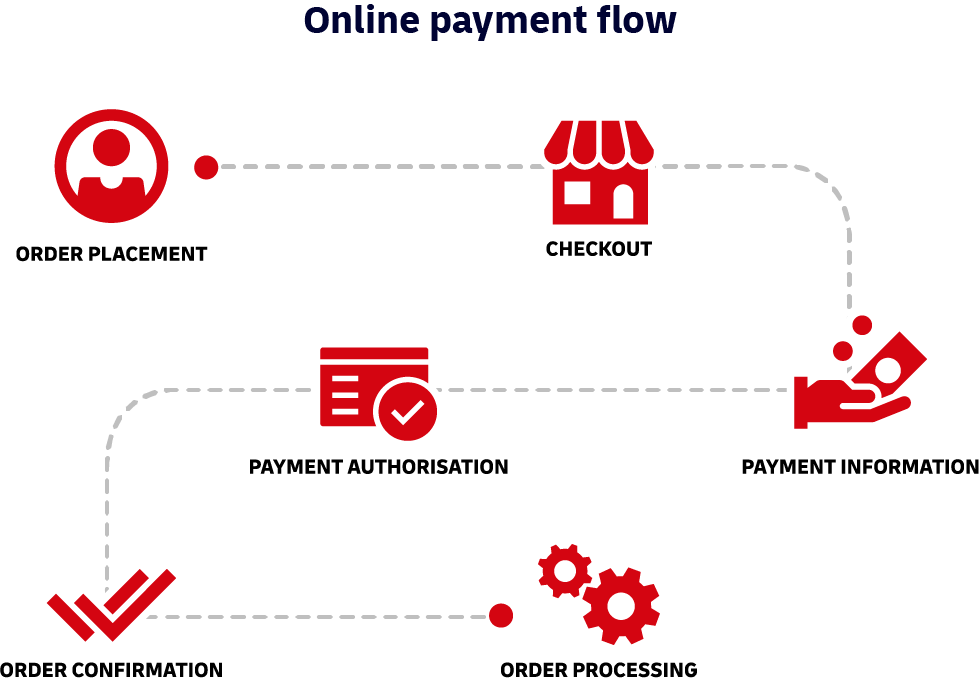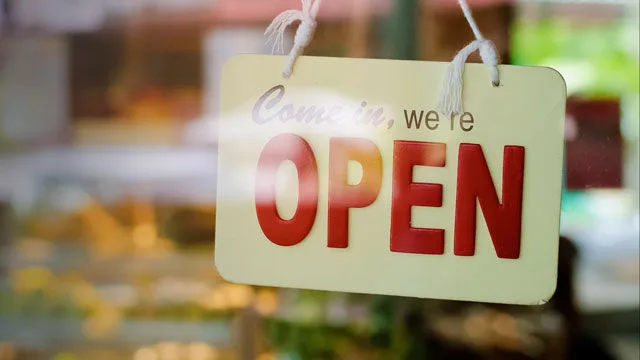Understanding e-commerce payment methods for seamless transactions
In the always-online, fast-paced, and constantly-evolving world of e-commerce, you need to serve many masters when it comes to the needs of your customers and business partners. You've got to juggle the needs of your customers and business partners, from getting products to their doorsteps efficiently to handling returns with ease.
And when it comes to online shopping payment options, people want a seamless, hassle-free experience. Safety is also crucial, so you’ll want to present the most secure payment method possible while keeping things moving quickly and smoothly.
You’ve got the product they want, and everything looks good, so let’s not fall down unnecessarily at the final hurdle and risk losing the customer at the last second. Instead, let’s guarantee that your e-commerce payment methods are top-tier.
What is e-commerce payment, and how does it work?
At its core, an e-commerce payment is any financial transaction that happens online, allowing customers to pay for goods or services digitally, even when they're making a purchase in a physical brick-and-mortar store.
Over time, how we pay for goods and services has changed dramatically. More and more, we are witnessing first-hand just how much society has transitioned to a cashless system.
The reason for this is simple and straightforward, because so too is the method. Whether using a credit or debit card, computer, mobile phone, or smartwatch, online payments may seemingly take place in a matter of seconds, but there are a number of steps involved.
Much like how the Internet revolutionised the world, online payment is centred around the transfer of information — and money, of course — from one communication system to another. There are different types of payment systems available for different e-commerce needs, each with its own benefits.
However, regardless of the system chosen, the key parties involved include the merchant, the consumer, the bank, and the payment system.
Step-by-step breakdown
Every e-commerce payment system, no matter how quick it seems, follows a general flow to make sure everything goes smoothly and securely. Here's an overview of the key stages in the e-commerce payment process so you know exactly what's happening behind the scenes:
Order Placement: Having browsed the available wares, the customer selects the product or products they wish to purchase, adds the selection to the online shopping cart, and proceeds to the checkout.
Checkout: At checkout, the customer can either log in to an existing account connected with the company or proceed as a guest. Next, they will provide shipping information — usually a home or business address — for delivery.
Payment Information: The customer will enter their specific payment details, including preferred method of payment — credit card, debit card, digital wallet, payment gateway, etc — and the associated security requirements — card number, expiration date, CVV, potential additional security prompts including Personal Access Number and/or two-factor authentication.
Payment Authorisation: The e-commerce payment gateway then securely transmits the preceding supplied information to the payment processor in order to verify with the customer’s financial outlet, responding with authorisation if the transaction has been approved or rejected if it has been declined.
Order Confirmation: Once the payment is successfully approved, the online store confirms the order and promptly dispatches a confirmation message to the customer.
Order Processing: The online store then prepares to package and deliver the customer’s purchase to the provided shipping address.
Source: Stripe
Types of payment methods used in e-commerce
As noted, there are numerous devices that can physically deliver an online payment. The most commonly used and effective ones include:
Credit / debit cards
Arguably the most ‘old-school’ method in this day and age despite its link to a host of developing digital platforms, the humble credit or debit card remains a major player among the types of payment cards used in e-commerce payment systems.
It’s small, it’s quick, it’s often just a matter of tapping an icon, and just as quickly, it’s back in your pocket. Or your wallet, if you prefer.
Prepaid cards
A handy and often welcome present, a prepaid card is essentially the modern-day gift voucher, loaded up with a designated amount of money and, depending on the host platform, generally widely accepted as currency amongst online retailers.
Electronic funds transfer
An electronic funds transfer — or EFT — is another somewhat more conventional method, given it involves a direct transfer from a customer’s bank account to the account of the business they’re dealing with — should it be a viable option provided by the business in question.
Digital wallet
Perhaps you’re more of a ‘digital’ wallet person? An increasingly popular option, the digital wallet is a secure software-based system that stores your payment details for quick and convenient transactions, similar to a computer browser logging your password details for fast future logins.
The digital wallet has become so commonplace that it began to mirror the use of credit cards in the US for the first time in 2020, a trend that shows little sign of going out of fashion any time soon. Examples include PayPal, Apple Pay, and Google Pay.
Mobile payments
Another notable trend in recent years is swapping out the plastic card for the smart device that drives your day.
You may have done a double take the first time you saw someone pay for their coffee by physically holding their phone or watch up to a machine, but it’s a practice that’s here to stay.
Cryptocurrency
Arguably a much more niche realm and a divisive one to boot. Cryptocurrency is a currency that exclusively exists in electronic form, cutting out the need for a bank account or the involvement of a financial institution. Many people remain sceptical as to the sustainability of cryptocurrency, but there are online retailers that trade in it, should you know your Bitcoin from your Ethereum.
Payment methods vs. payment gateways
Understanding the difference between e-commerce payment methods and payment gateways is crucial for any online business. As covered above, payment methods are how customers pay (like credit cards or digital wallets).
A payment gateway, on the other hand, is the secure technology that processes these transactions, connecting your website to the banks. You can think of it as the secure bridge between your customer's chosen payment method and your bank account.
Knowing this distinction will help you streamline your e-commerce payment process, ensuring smooth transactions and happy customers. It's key to managing your online sales efficiently.
Types of e-commerce payment gateways
At first glance, all online payment gateways might seem pretty much the same. But actually, there are a few different types, each working in its own way to process those transactions. Understanding these differences can really help you pick the best fit for your online business! The main types are:
Hosted payment gateway: With this option, your customers are redirected away from your website to the payment gateway's secure page to complete their transactions. Think of it like sending them to a trusted third party to handle the sensitive stuff. Once the payment is done, they're brought back to your site.
Self-hosted payment gateway: This type keeps customers on your website throughout the entire checkout process. While it offers more control over the user experience, it also means you're responsible for maintaining a higher level of security compliance yourself.
API-hosted payment gateway: This is a more integrated solution. Your website uses an Application Programming Interface (API) to send transaction data directly to the payment gateway without redirecting the customer. This provides a very seamless checkout but requires more technical know-how to set up.
Local bank integration gateway: Some Irish businesses opt to integrate directly with a local bank's payment system. This can sometimes offer lower transaction fees or specific benefits for businesses operating primarily within a particular country but might involve a more complex setup.
Top payment gateways in Ireland
When it comes to picking the right payment gateway for your business, you've got plenty of options. There are lots of great providers out there, each with its own unique features and benefits. To help you get started, here are some of the top payment gateways widely used and trusted by businesses across Ireland:
PayPal
Founded in 1998 — though not taking on the moniker it has today until 2000 — American multinational financial giant PayPal has long established itself as a household name in the vein of Google and Apple.
Due to its market domination and a strong reputation for secure transactions, PayPal is an attractive option for any business — even seeing its globally-recognised logo in connection with your operation projects a certain amount of trust and confidence.
PayPal also boasts invoicing capability, fraud-based protection programs, a one-touch checkout method for a faster sales process, no set-up fees, and is compatible with the aforementioned digital wallet option.
However, PayPal is a more expensive payment gateway system than others. You can view the relevant transaction rates here.
Stripe
The brainchild of Tipperary brothers Patrick and John Collison, Stripe disrupted the market in 2010 and has been blazing a worldwide digital trail ever since. Stripe is notable for its flexibility and deep customisation options, but getting to grips with its interface might be a touch overwhelming if you’re not terribly technical.
Lauded for its agility, Strip is often seen as a highly attractive method due to not being tied to a specific e-commerce platform, enabling users to easily integrate it with websites and mobile apps and merchants to readily accept online payments.
Revolut
A fashionable go-to for transfers amongst friends, Revolut promises to make global payments simple for businesses, too. With a keen focus on market growth — including an announced 40% increase in its worldwide workforce back in 20241 — Revolut has brought significant innovation to the financial industry since its birth in the summer of 2015.
Revolut Business offers unlimited free payments to other Revolut accounts, unlimited team members, access to prepaid debit cards, and a range of account tiers, including a free one.
Shopify
Not to be confused with a certain green-tinted music streaming service, Shopify offers competitive payment processing fees and accepts a variety of payment methods, including credit cards and digital wallets.
The platform also integrates with social media platforms, including Instagram and Meta (Facebook), and features a dedicated 24/7 customer support service.
It should be noted, though, that Shopify Payments is only available to Shopify merchants, while processing fees differ depending on the tier of your plan.
Adyen
Dutch payment company Adyen has been an e-commerce staple since its global expansion in 2012, six years following its inception.
Variety is the spice of life here, with Adyen offering a wealth of international payment options, including digital and all major credit cards. Particularly popular with large-scale online enterprises, Adyen allows newcomers to create a test account to see if the fit is right.
Choosing the right online payment system for your website
As you can see, we’re dealing with something of a crowded market here. It’s one of those ‘good’ problems to have, but you don’t want to develop a headache when it comes to choosing the right type of electronic payment system for you and your e-commerce business.
Consider the following key areas when weighing up the pros and cons:
Transaction volume
How much business are you doing on a daily, weekly, and monthly basis? The numbers should be your priority baseline here. Some of the above options are considerably more suitable for a vast, frequently busy outlet than a smaller one. Audit your operation and scale accordingly.
Fees
Once again, look to the numbers for guidance. Yes, one has to spend money to make money, but with so many options at your disposal, it pays to shop around and ensure that you’re getting the best value out there.
Compare and contrast transaction fees across the board while also keeping an eye on other potential tariffs, set-up costs, maintenance fees, and carefully hidden charges.
Integration capabilities
No point in signing up to a platform if it’s not possible to smoothly integrate it with your own, right? See if there’s the option to make a test account and get some practice in before committing to a relationship. Think of the overall user experience and how vital it is to be efficient and fast. Also, be especially mindful of how it all runs on mobile devices.
Payment security
In payment, online or offline, trust and security are everything.
So, let’s completely avoid that latter scenario by ensuring your e-commerce payment system has the following features:
Encryption
Encryption is a method that prevents sensitive customer data and financial transactions from unauthorised interference such as theft and tampering.
Businesses tend to implement protocols such as Secure Socket Layer (SSL) and Transport Layer Security (TLS) to secure data — including payments — transferred between customers and businesses.
Encryption should also be applied to your business itself, ensuring further security for customers — both personal information and payment details.
Fraud detection
Unfortunately, cybercrime has emerged as a wildly successful industry of its own. Cybersecurity Ventures estimates that cybercrime will cost the world 1 trillion USD per month by 20312.
Combating this incredibly lucrative underworld is clearly difficult, and with increasing awareness of targeted attacks on individuals, shielding your customer is an urgent matter.
Fraud detection is one such prevention method. You can implement tools to monitor transaction patterns and customer behaviours with the purpose of identifying patterns of fraudulent activity.
On a more basic level, the Address Verification System (AVS) and Card Verification Value (CVV) should be required fields as standard.
Two-factor authentication
A relatively recent but now firmly present innovation in our daily lives, two-factor authentication (2FA) can sometimes annoy us by presenting an additional login screen, but the minor irritation is worth it for the security it brings.
For the uninitiated, 2FA requires the user to present two distinct forms of identification in order to access the next step in an online process, including transactions, thus requiring them to log in on two different platforms or devices.
Should you require more steps, multi-factor authentication (MFA) levels things up, requiring three distinct forms of identification, ranging from passwords to security questions to biometric data.
Secure payment gateways
As detailed above, secure online payment gateways such as PayPal and Stripe have successfully leveraged security as part of their reputation, so investigate their commitment appropriately before selecting a payment gateway system that best works for you.
Updates and protection
Maintenance plays a part here, so be sure to perform regular software updates and security monitoring checks on your internal payment structure, and consider installing a strong firewall and network security system to ward off malware and hackers.
Customer preferences
No harm in underlining those last couple of points — think of the customer every step of the way in this process. They want a comfortable, uncomplicated, and as close to an immediate experience as possible.
Failure to provide this means they will look elsewhere. And given the increasing popularisation of mobile commerce, ensure that everything is smooth and easy when using a smartphone or other mobile device.
Industry standards
As with all aspects of your business, you’ll aim to meet and even exceed the industry standard, so be keenly aware and react to the specific requirements asked of you. Yesterday’s Man tends not to get very far, particularly if his payment options are inept and out-of-date.
Streamlining your e-commerce payment process for success
Exchanging money for goods and services is an ancient practice, but the modern world continues to present new methods and innovations to drive business, with e-commerce playing host to constant evolution.
As outlined in this article, online payments occur every second of every day, with multiple different ways to do so. As a business owner, it’s vital that you accommodate every possible option to maximise your sales potential and seamlessly meet your customers' expectations and diverse needs.
That's why it may be wise to sign up for one of the many secure payment gateway systems available in Ireland — just be certain that such a platform matches up with your needs. Security is critical, too, for you, for your business, for your customers, and for your partners. Take care when it comes to this part of the jigsaw — your reputation and your future count on it.
After the payment is complete, it’s time to turn your attention to shipping. Explore DHL Express’ range of tailored shipping services, including sustainable logistics solutions and flexible On-Demand Delivery to streamline your operations and ensure your customers always get their parcels just how they like them.
Open a DHL Express Business Account for fast, international shipping with the experts.






















